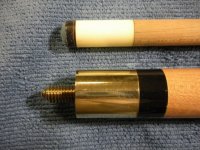Just wondering why brass joints on cues have seemed to fall off completely in popularity of modern cues in replacement for steel joints, especially 5/16x14 cues. Is it a playability issue? Does stainless steel play better? Or the fact that brass tarnishes over time? Just curious what everyones .02 is 
Cheers
Cheers



